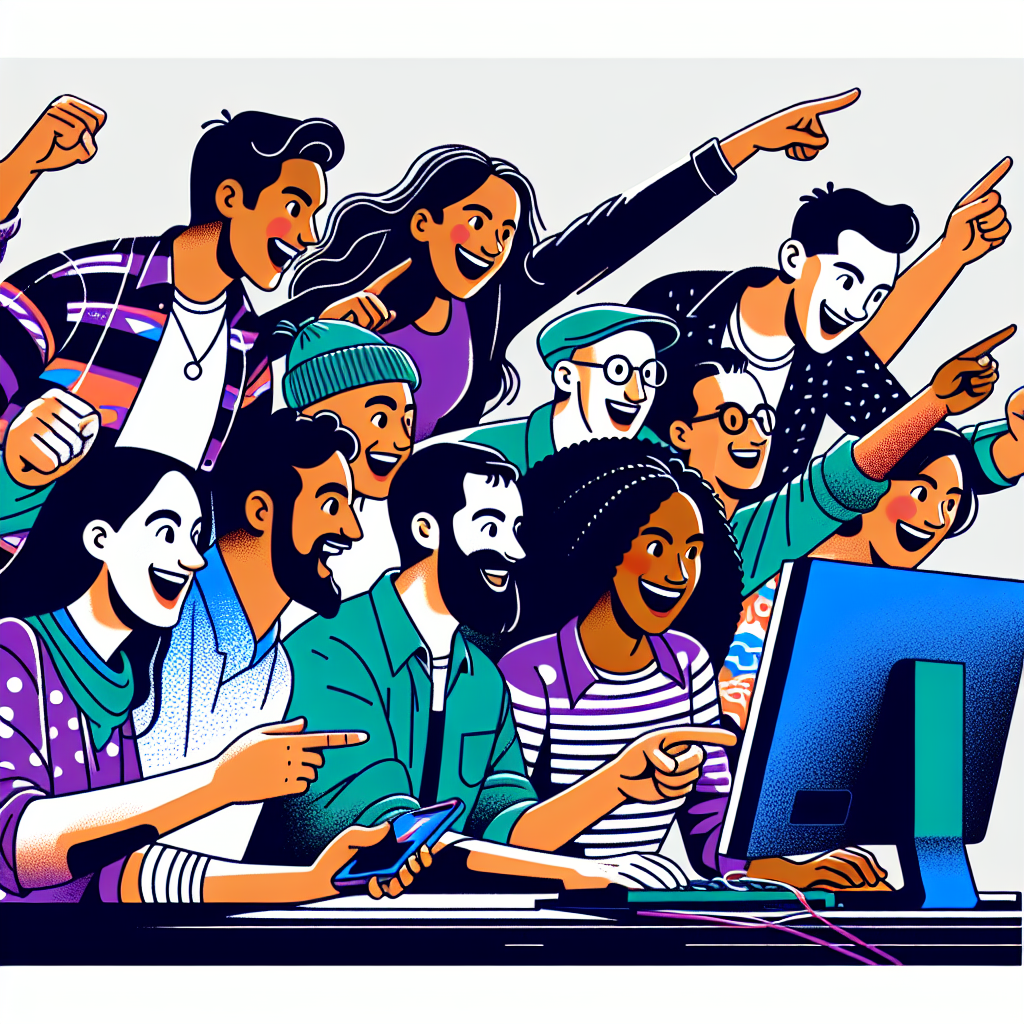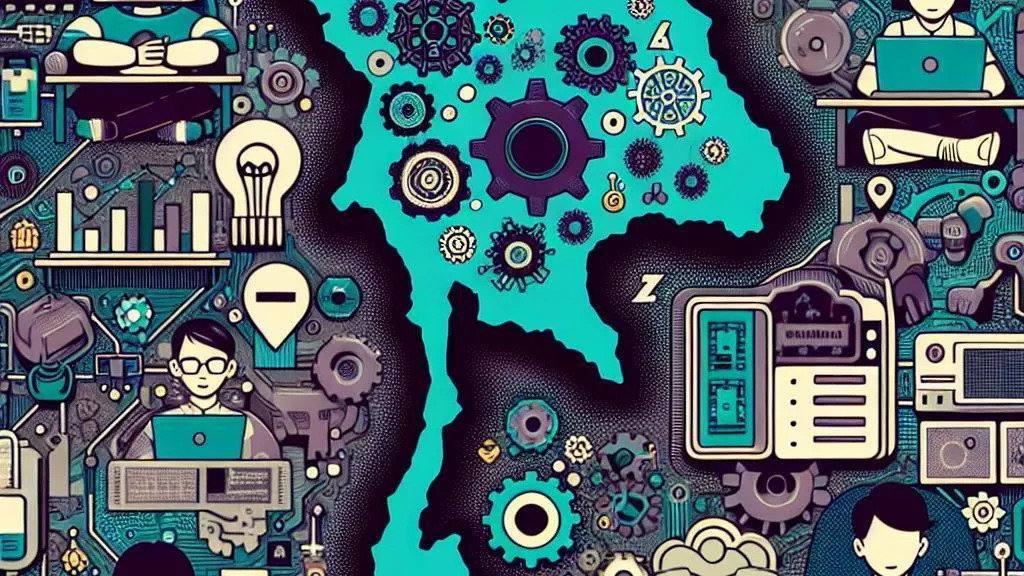What are some potential pitfalls and issues when using AI for a business chatbot?
In the labyrinthine digital marketplace where businesses vie for a spot in the limelight, chatbots …

In the fast-paced world of digital content, capturing and retaining audience attention has become increasingly challenging. However, the emergence of generative AI has opened up new possibilities for creating content that not only engages audiences but also has the potential to go viral. This post will explore the concept of generative AI, its applications in content creation, and how it can help you create content that resonates with your target audience and spreads like wildfire.
Generative AI is a subset of artificial intelligence that focuses on creating new content, such as text, images, audio, and video, based on patterns and structures learned from existing data. Unlike traditional AI, designed to recognise and classify existing content, generative AI uses deep learning algorithms, such as Generative Adversarial Networks (GANs) and Variational Autoencoders (VAEs), to generate novel and original content.
Generative AI involves training a model on a large dataset of existing content, allowing it to learn the underlying patterns and structures. Once trained, the model can generate new content that mimics the training data's style, tone, and characteristics while introducing novel elements and variations.

Generative AI has numerous applications in content creation, making it an invaluable tool for marketers, content creators, and businesses looking to engage their audiences and increase their reach. Some of the most common uses of generative AI in content creation include:
1. Blog post generation: Generative AI can create compelling blog post titles, outlines, and even entire articles based on a topic or keywords. By analysing successful blog posts in your niche, the AI can identify the key elements that make them engaging and replicate them in new content.
2. Social media updates: Generative AI can help you create attention-grabbing social media posts, including captions, hashtags, and images or videos. By studying the characteristics of viral social media content, the AI can generate updates more likely to be shared and liked by your followers.
3. Video content: With the rise of video marketing, generative AI can be a powerful tool for creating engaging video content. From generating video scripts and storyboards to creating animations and special effects, AI can help you produce high-quality videos that capture your audience's attention.
4. Email marketing: Generative AI can help you create personalised email marketing campaigns that resonate with your subscribers. By analysing user data and behaviour, the AI can generate targeted email content and subject lines that are more likely to be opened and acted upon.
Creating content that goes viral is no easy feat, but generative AI can help you identify the key elements that make content more likely to be shared and spread. Some of the most critical factors that contribute to virality include:
1. Emotional appeal: Content that evokes strong emotions, such as joy, surprise, or anger, is more likely to be shared and go viral. Generative AI can help you create content that taps into these emotions by analysing the sentiment and tone of successful viral content.
2. Novelty: People are likelier to share new, unusual, or unexpected content. Generative AI can help you create content that stands out by introducing novel elements and variations while staying true to your brand voice and messaging.
3. Shareability: Content that is easy to share and digest is more likely to go viral. Generative AI can help you create optimised content for sharing, such as short-form videos, infographics, and social media posts, with compelling visuals and clear calls to action.

In addition to identifying viral-worthy content, generative AI can help you optimise your content for maximum reach and engagement. Some of the ways AI can help you optimise your content include:
1. Data analysis: By analysing data on your target audience's preferences, behaviour, and engagement patterns, generative AI can help you create content that is more likely to resonate with them. This can include identifying the best times to post, the most effective formats and platforms, and the topics and themes that generate the most interest.
2. Natural language processing (NLP): NLP is a subfield of AI that focuses on the interaction between computers and human language. Using NLP techniques, Generative AI can help you create more engaging, readable, and shareable content. This can include optimising your content for search engines, using language that appeals to your target audience, and incorporating persuasive elements like social proof and emotional triggers.
3. A/B testing: Generative AI can help you create multiple versions of your content and test them against each other to see which ones perform best. By continuously iterating and refining your content based on data-driven insights, you can create content that is more likely to go viral and achieve your marketing goals.
To illustrate the power of generative AI in creating viral content, let's look at some real-world examples of successful campaigns that have used this technology:
1. Burger King's "Whopper Detour" campaign: In 2018, Burger King used generative AI to create a series of personalised ads that encouraged users to "detour" from McDonald's and visit a nearby Burger King instead. Using geolocation data and AI-generated content, the campaign achieved a 37.5% increase in monthly visits and a 3x higher mobile sales rate.
2. Domino's "Anyware" campaign: Domino's Pizza used generative AI to create humorous social media posts showcasing how customers could order their pizza using everything from smart speakers to smartwatches. The campaign generated over 2 billion earned media impressions and helped Domino's achieve a 14.5% increase in sales.
3. Oreo's "Dunk Challenge" campaign: Oreo used generative AI to create personalised videos that challenged users to submit their own Oreo dunking videos. The campaign generated over 2 million user-generated videos and helped Oreo achieve a 13% increase in sales.
Now that we've explored the potential of generative AI for creating viral content, let's summarise some best practices for using this technology effectively:
1. Start with a clear goal and target audience: Before using generative AI to create content, ensure you clearly understand your marketing goals and target audience. This will help you create content that is more likely to resonate with your intended audience and achieve your desired outcomes.
2. Use high-quality training data: Your generative AI output will depend mainly on the quality of your training data. Ensure you use a diverse and representative dataset that aligns with your brand voice and messaging.
3. Test and iterate: Generative AI is not a set-it-and-forget-it solution. To create genuinely viral content, you must continuously test and refine your output based on data-driven insights and user feedback.
4. Combine AI with human creativity: While generative AI can be a powerful tool for creating engaging content, it's important to remember that it's not a replacement for human creativity. Use AI to generate ideas and insights, but always add your unique perspective and brand voice to the final output.
5. Stay current with the latest trends and technologies: Generative AI is a rapidly evolving field with new techniques and applications constantly emerging. To stay ahead of the curve, stay up-to-date with the latest trends and technologies.
Generative AI has the potential to revolutionise the way we create and share content, making it easier than ever to produce engaging, shareable, and viral-worthy content at scale. By understanding the fundamental principles of generative AI, identifying the elements that make content go viral, and optimising your content for maximum reach and engagement, you can harness the power of this technology to achieve your marketing goals and stand out in a crowded digital landscape.
Whether you're a marketer, content creator, or business owner, generative AI is a tool you can't ignore. By embracing this technology and incorporating it into your content strategy, you can create content that informs and entertains your audience and drives actual business results. So why not see how generative AI can help you unleash the power of viral content?
Some other posts you may like

What are some potential pitfalls and issues when using AI for a business chatbot?
In the labyrinthine digital marketplace where businesses vie for a spot in the limelight, chatbots …
June 17, 2024
Read More
Thailand’s Ambitious AI Plans: Challenges and Opportunities
For the past 12 years, I have lived in Thailand, immersing myself in the local …
June 17, 2024
Read More